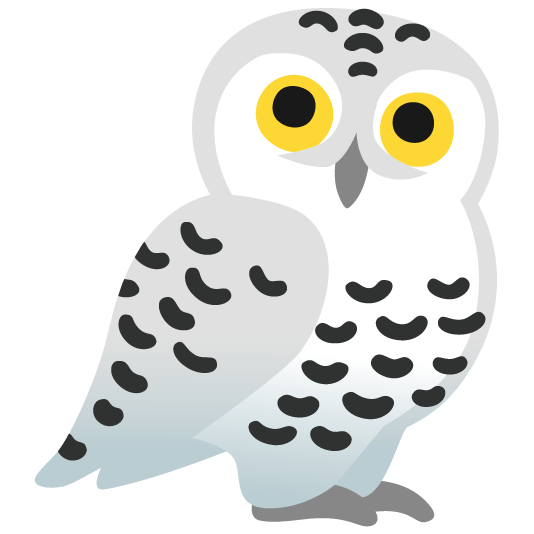
As of 2024-03-23, owlyfans.neocities.org will no longer get updates, this means that information, links, and contact info, among other things, may be outdated or otherwise wrong by the time that you are reading this!
Please instead view the owly.fans version of this page.
Being first made in 1991, Linux is the name of a Unix-like operating system (or strictly family of) for computers - it's a bit like Windows or even macOS, but while those two examples are (mostly) closed sourced, Linux is based upon the idea of open source and being free for everyone. Open source means that anyone is more than welcome to browse the code for a project, seeing how and why it works the way that it does, even being allowed to download and make other versions of the code, depending on how liberal the owner of the product is.
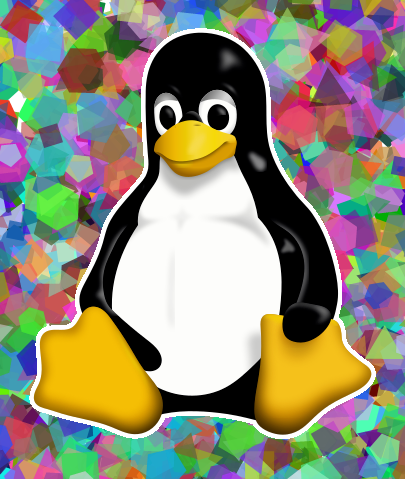
Tux is a fat penguin chosen by Linus Torvalds to be the official brand character of the Linux kernel - The penguin was designed by Larry Ewing with an initial suggestion by Alan Cox[001][002]
Click for full image.
Some examples of projects that have open source code are VLC media player that allows people to play audio and video files like MP3s, the web browser Firefox, Blender (that allows you to make 3D artwork), and even this webpage.
Other examples include classic computer games from the over-the-top fun with Rise of the Triad, heavy metal inspired Doom, the simple but yet fun text adventure Zork, and even the silly but-yet somehow bad-ass Duke Nukem 3D.
All of the previus examples of the computer games were all from large, well established companies, that are willing to publish their source code to their older titles as they know that their competaters will not likly us the source code and if they did, then it would be only a tiny amount. A company such as id Software can benafit by releasing the source code to, say, Doom, as thanks to that, modding of the game can become even better, allowing people to make their own source ports for it, exspaning on it and even being able to make entialy new games using the code written by someone else. This will benfait id Software in this example, as by making their games open source, it encorages peolple to stay loyal to the company thanks to the modding community that has been made by this action and that people will start to trst them as they will see that id Software isn't just publishing games for the sake of money, rather the comunity - this in-turn will make it more likly that when id Software release a new Doom game, it will have a garateaned profit.
If the source for Doom was not made public, then this might have resulted in 2016's Doom making far less of a profit, not encoraging id Software, now owned by Bethesda Softworks that since got bought up by Microsoft, to put as much effort into develaping the game then they might have of.
Open-source isn't just good for the user-base of computer games, it can also help communication such as with IRC, that was created by Jarkko Oikarinen in August 1988 and is still going strong today, even in - if the protocol was not open, then communication in the early days of the Internet would have been even more slow then they were at the time, and remember, this was years before the days of even Skype, Discord, or Zoom.
Open-source can also be exstreamly inportant, as if something such as HTML was never made avalible for public use, then the whole face of the Web would not be the same at all, and in fact, people like Al Mackey (who we will see later) might not have been able to publish their art as easy if the Web were to say closed.
Such benafits of open source projects, over closed sourced, is that anyone can review the code at no cost apart from their time, allowing to see any errors that might occure with the program, for an example, while looking at the source for GIMP, a person may find something wrong with it - because of this, they[note 001] could easaly inform the head(s) of the project that there is an error in the source code and even how to fix such issues. This is sometimes seen in closed-sourced projects, althought it is more likly that the head(s) paid someone to review the code and disallowed him/her[note 001b] to acually publish said code, in fear of legial ramafacations.
In a way, closed source can seem better from the outside; it is much more easy to make a profit off of it and peopel can't recyle your code and use your hard work for free in their own project, althoguht it can be less sucure and more vonable, such as with Microsoft's Windows that has a whole market around selling anti-virus softwear - a market that just isn't a thing for the Linux community, as if there is a vonability in the code, then people will not only point it out, but write their own code that can be used.
Because of this, a person could say that Linux is in fact better than their closed-sourced counter parts, Windows and macOS.
Despite of this, in June 2021, roundable only 2.68% of the desktop operating system market share worldwide ran Linux[019], despite of this 81% of all smartphones are powered by Linux[020], 96.5% of all of the top one million domains in the world (as ranked by Alexa) use Linux[021], and the top 500 supercomputers run it also[018].
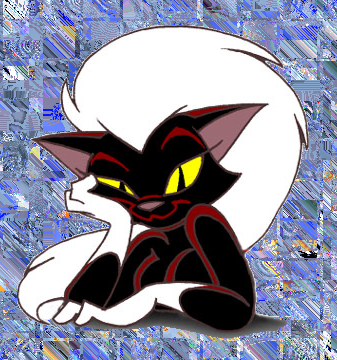
Kitty is the mascot for AROS Research Operating System, a free and open-source multi media centric implementation of the AmigaOS 3.1 application programming interface, they are designed to be portable and flexible.
They were designed by Eric W. Schwartz, who was "kind enough to bring AROS' new mascot to life"[016], Schwartz is also known for making the WebComic Sabrina Online, running from 1996 to 2016.
Click for full image.
As with a lot of good projects, especally one that was quciky growing, Linux needed a mascot, so in 1996, under the suggestion of Alan Cox, Larry Ewing made the mascot a penguin, being approved by Linus Torvalds (the father of Linux) soon after[003]. Much like Xenia, Tux (as seen on the right), was not given a name at first - James Hughes came up with the idea of giving them their name, suggesting to call the penguin Tux, that (fun fact) is short for Torvalds UniX[004] and also the name Tux also finds its roots in the word tuxedo as a penguin looks as if it is wearing a black tuxedo[005]. Other names that people came up with was Homer, as suggested by Linus Torvalds (it was the height of The Simpsons after all).
Tux is certainly not the only mascot to be used for open source projects and in fact, there have even been a number of furry mascots over the years for open source projects with the likes of the GNU head, Kiki the Cyber Squirrel for Krita, and Kitty the mascot for AROS Research Operating System (AROS, as seen on the right), the latter of the three being what most people would call the most anthropomorphic[npte 002] of the lot.
Anthropomorphic mascots are also very common outside of the world of computers, such as with the Summer Youth Olympics that quite often have cute and cuddly characters representing them with the likes of Lyo and Merly (2010), Yodli (2020), and Sjogg (2016).
Out of all of the open source mascots, Tux is the most well-known of them all, being used in games and even being seen in an ad for Froot Loops of all things.
The reason as to why the mascot for Linux turned out to be a penguin is quite simple as Linus Torvalds just likes the animal, as relieved in this E-Mail that was published via a Linux mailing list[017];
Re: Linux Logo Linus Torvalds (torvalds@cs.helsinki.fi) Sun, 12 May 1996 09:39:19 +0300 (EET DST) Umm.. You don't have any gap to fill in. "Linus likes penguins". That's it. There was even a headline on it in some Linux Journal some time ago (I was bitten by a Killer Penguin in Australia - I'm not kidding). Penguins are fun. As to why use a penguin as a logo? No good reason, really. But a logo doesn't really [h]ave to mean anything - it's the association that counts. And I can think of many worse things than have linux being associated with penguins. Having a penguin as a logo also gives more freedom to people wanting to use linux-related material: instead of being firmly fixed with a specific logo (the triangle, or just "Linux 2.0" or some other abstract thing), using something like a penguin gives people the chance to make modifications that are still recognizable. So you can have a real live penguin on a CD cover, for example, and people will get the association. Or you can have a penguin that does something specific (a Penguin writing on wordperfect for the WP Linux CD, whatever - you get the idea). Compare that to a more abstract logo (like the windows logo - it's not a bad logo in itself). You can't really do anything with a logo like that. It just "is". Anyway, go to "http://www.isc.tamu.edu/~lewing/linux/" for some nice examples.. Linus
Despite Tux being approved by the creator of Linux himself, some people did not think that the fat penguin represented the over-all vibe of the community, so at least three sets of votes took place in 1996 to decide who or what should be the mascot of Linux[006].
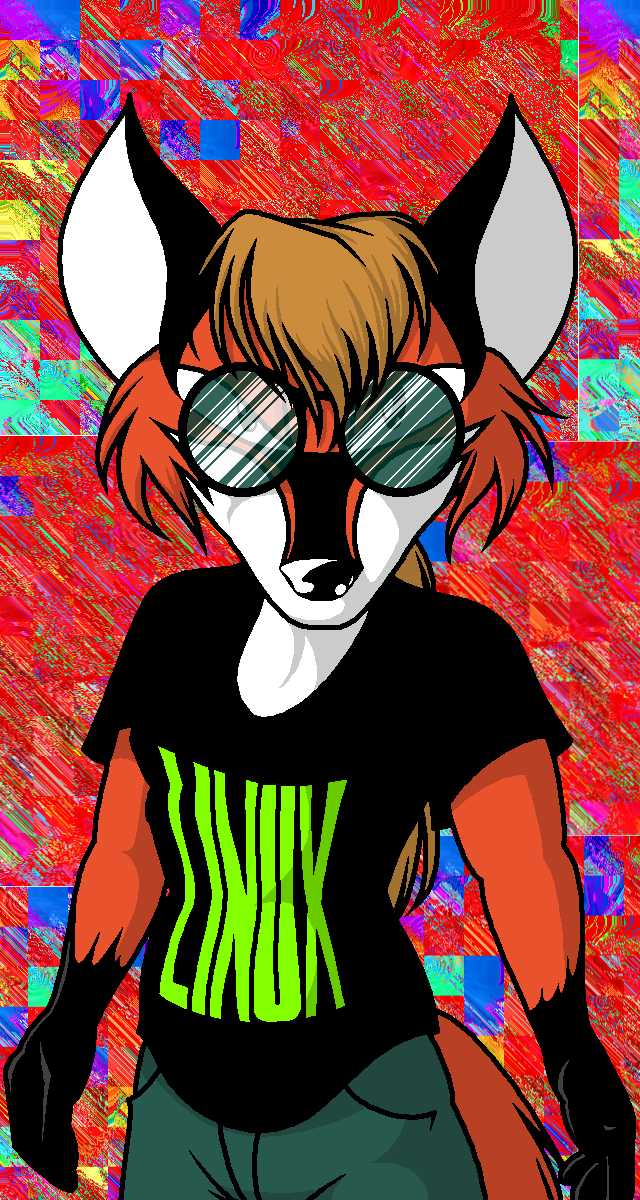
Linux Fox -- the mascot with 'real attitude' is an anthropomorphic fox. Anthropomorphic animals are a staple of the furry fandom[002].
Click for full image.
At the time, furry artiest Al Mackey submitted Linux Fox, "a Linux mascot with real meaning (and real attitude)"[006] (it was the 1990s after all). Linux Fox (also called "LinuxFox") was described as being "designed to be the #1 competitor to a certain cute and cuddly penguin. The penguin is nice and all, but it doesn't really remind me[, Al Mackey,] of a lean and mean multitasking/networking machine. LinuxFox, on the other hand, is clearly a hard-core Linux coder. :-)"[007].
Linux Fox did okay in the contest, coming up in third place, getting 280 votes[006], getting beaten by Matt Ericson's design that was simply just the word "Linux" with the "i" being replaced with a lightbulb and Tux the penguin, the latter being the winner.
In the end, Tux would became the mascot for Linux and a symble for open source as a whole while Linux Fox would become forgotten by most. As time passed, not all that much happened regarding the anthropomorphic fox for about two or so years, in that time in 1997, Linux Fox was seen on a t-shirt of artwork showing Nervick, a fursona of Tomas Manley in 1997[008] made by Al Mackey, but apart from this, that was it -- there was seemingly no other fan artwork made of the anthropomorphic fox at the time.
Time would pass and people moved on - Al Mackey would start work at HP in June 1998 to June 2000, moving to Virage in October 2000 to August 2002[009]. At the same time, they carried on making art and music, even selling a CD-ROM that boasted about having "over 200 pictures by ATM himself, including several items unreleased anywhere else. Also, over one hour of music, local versions of two web-games, and a tutorial of Photoshop techniques"[010].
As of this article being published in 2021, Al himself is still making artwork to this day, making majority adult cartoons of anthropomorphic animals[note 003], posting on their Fur Affinity regally since 2006[NSFW] and also in 2019, moving to their own website, NaniMoose's Smut Emporium[NSFW] where they also post their artwork, a lot of which goes back to the "the early 'aughts"[015].
Since it was decided that Tux should be the official mascot for Linux, even been seen in many a free software game, Linux Fox essentially was not fully representing any real product or idea at all, until 1998 When The fOX Project was started, it was seemingly made with the aim of making "usefull applications for UN*X in an organized fashion"[013]:
The fOX Project is a an[sic] attempt to create a suite of usefull applications for UN*X in an organized fashion. With the help of developers worldwide, and with the use of the Xclass toolkit by Hector Peraza, this project has become a reality.
The Xclass Toolkit provides a simple and uniform way for programmers to access widgets that have the Windows 95 3D look and feel. The fOX Project extends on the "Windows 95 look" by providing a set of standards to insure good code quality, as well as good GUI designs. This project also attempts to provide a starting ground for fledgling C++/X11 programers (such as myself ;-) by providing project ideas as well as design standards.
As it so happened, Linux Fox would be used for the seemingly now-discontinued software, although no new artwork of them was made, rather it was chosen that the project head(s) would simply recycle the first drawing of Linux Fox for their own needs. Credit was given to the origin of Linux Fox, with a link to the source to the anthro fox, although Al Mackey was not named on the credit page, the same goes for the rest of the people who worked on the project and as foxproject.org has been off since around 2008. Although this may not be fully correct, as the website has sadly not been fully archived via The Internet Archive, the history of the project has seemingly been lost, although we can see a list of programs made: OXProgBar, OXFont (not a program, but still of note), OXStatusBar, OXResizer, and OXMdi.
Sadly, much like a lot of the site, the programs have also been lost and searching up terms like The fOX Project on a search engine today only shows up with non-reverent links.
Related, but in 1997 a project by the name of FOX toolkit was set up, a "C++ based Toolkit for developing Graphical User Interfaces easily and effectively. It offers a wide, and growing, collection of Controls, and provides state of the art facilities such as drag and drop, selection, as well as OpenGL widgets for 3D graphical manipulation. FOX toolkit also implements icons, images, and user-convenience features such as status line help, and tooltips. Tooltips may even be used for 3D objects!"[014], unlike The fOX Project, FOX toolkit seems to still be updated as the website is still up.
Despite the two names and the similar time frame that they both started on, they are not seemingly not related and FOX toolkit was brought up so that any confusion would not occur.
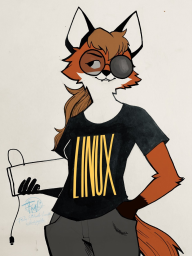
As posted by finley[011], this would be the first artwork showing Linux Fox in over 20 years - at this time, she had not yet been publicaly named as Xenia.
23 years after the (nerdy) world saw Linux Fox, nothing happened (or at least nothing happened that was documented), until in 2019 when finley of @cathodegaytube's girlfriend showed her Linux Fox, as finley is an illustrator, she drew her own interpretation of the fox (as seen on the right), mostly keeping to the design of the original 1990s-look Al Mackey had given to them - an interesting misunderstanding that finley made was mistaking that Al had designed them to be female, writing that "apparently the Linux mascot was almost a cool fox girl and everyone seems to have forgotten about her, so naturally i drew her!"[011].
At the same time, finley had been in contact with Al Mackey via E-Mail and in a Twitter thread showing the new artwork, finley showed screenshots of Al talking about Linux Fox and how that finley's girlfriend, Amy Wright of @AmyWrightDev, decided to rename Linux Fox to Xenia[012]:
The fox was intended to be male, although certainly drawn fairly androgynously.. But to me your interpretation of her as female actually makes a lot of sense, especially in the context of time. It matches the transitions of a lot of the smartest, nerdiest Linux users I know.
And sure, you made her trans! Yes, feel free to run down these emails too. Xenia seems like a very appropriate name. I just read Stephen Fry's Mythos and he has a lot to say about the ancient Greek concept of Xenia[note 004]. What a weird coincidence.
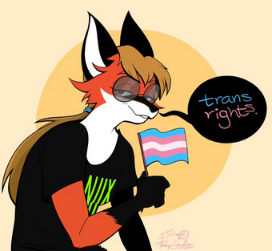
The second artwork of Xenia shows her with the trans pride flag while saying "trans rights".[012]
Another interesting development of this thread was that we got to find out that the original 1996 drawing was made on an Amiga (a family of PCs introduced by Commodore that would be discontinued also in 1996) on a mouse (a lot of artists prefer using something such as a digital drawing tablet[note 005] today) and that Al's brother, Ed, "who was more involved with Linux at the time, was the one tht[sic] prompted [Al] to enter the contest"[012].
On 2020-06-07, this information would become public knowledge when finley would make a post about it on her Twitter[012], along with new artwork of Xenia showing her with the trans pride flag, cementing her as a transfeminine[note 005] character not only in the eyes of fans but also the creator. While it might have just been a change, the new artwork of Xenia was posted in June, which so also happened to be Pride Month.
While there was artwork of Xenia before this date, not much was made: On 2019-12-01, Amy New made a portrait after they "Decided to draw the Linux fox mascot", then on 2020-05-13 Marbles published a number of work-in-progress sketches of the fox, as commissioned by unknown.
Since the publicacation of the second artwork of Xenia
As with a lot of charaters that get popaler on the Web, Xenia has had a number of artwork made that has her as the main focus of the it. Despite Linux being built from the grownd up as free and open source, a lot of artwork of the anthro fox is not open source at all, rather having an unknown lisences - along with this, the original 1996 artwork of Xenia is in fact not fully open source, only allowing people to freely share the artwork as long as it has "anything having to do with Linux"[007]. Despite of this, there is artwork of Xenia that is indeed using some sort of open lisence for its artwork.
With the rise of the popuality of Xenia, the website Xenia, the Linux mascot was setup by Efi of efi.glitch.me, being made to showcase a number of artwork of the fox and give the reader a breafe history
Note 001: Transgeaner moment
In too many science, police, and other reports, I see the term "he or she" come up a fair bit, I personally find this term to not be only outdated, but also quite clunky - in my opinion, the reason why it sounds clunky as if you, the reporter, have to refer to a person a lot, reading "he/she" can show down the process for the viewer of your report.
I, Cass Python, also find it to be an outdated term as, well, it's the year 20-something, and the idea of non-binary people is becoming more and more excepted - it just seems weird that someone would want to exclude these people in our progressive world where trans people, rightfully so, are becoming more and more excepted.
Although, I can understand why the police would want to excuse trans people - I doubt that they will be willing to be progressive anytime soon.
For more on this, Tom Scott did a very good video on this subject: Gender Neutral Pronouns: They're Here, Get Used To Them.
Note 001b: Transgeaner moment part II
Seems odd now that it's been pointed out.
Note 002: Anthropomorphic???
Meaning to give human traits, emotions, or intentions to non-human things - properties like Tom and Jerry, Mickey Mouse, and Buggs Bunny are all examples of classic cartoons that give human traits to animals.
Note 003: Yiff
Known in the furry fandom as "yiff"; As with a lot of fandoms made up of adults, sex and pornography is an important facet to it, much like how hentai (drawn adult cartoons) is a part of the anime fandom.
Furries are humans after all, so, naturally, sex would be a part of it.
Unlike the anime community, the furry fandom itself is made up of a lot of people that self-identify as being LGBT+. There have been multiple estimates of the percentage of LGBT+ people in the fandom, with the number usually being high, possibly as high as 90%, but polls have shown differences in estimations.
This article isn't about the sexuality of people, but if you want to learn more, going to https://en.wikifur.com/wiki/LBGT_in_the_furry_fandom and https://en.wikifur.com/wiki/Sexual_orientation is a good starting place.
Note 004: What is Xenia?
In ancient Greek lore, Xenia (or "ξενία") is the concept of hospitality and is mostly translated as "guest-friendship or "ritualized friendship".
note 00: Digital drawing tablet note
Also known as a digitizer, drawing pad, digital drawing tablet, pen tablet, or digital art board.
note 00: Transfeminine???
As in a trans person that identifies as female, also known as just transfem.
The masculine equivalent of transfeminine is transmasculine or transmasc.
001: Linux 2.0 Penguins
Background made by numbers (CC BY-SA-NC) - thank you for making the background
https://github.com/garrett/Tux/blob/main/tux.svg
002: biglinuxfox.gif
Background by Cass «Owly» Python, FOPL-ZERO v1
https://web.archive.org/web/19970517234207/http://www.early.com/~emackey/linux/biglinuxfox.gif
003: Linux Logos and Mascots
https://web.archive.org/web/20040401161253/http://www.linux.org/info/logos.html
004: Re: Let's name the penguin! (was: Re: Linux 2.0 really _is_ released..)
https://web.archive.org/web/20141208114346/http://lkml.iu.edu/hypermail/linux/kernel/9606.1/0175.html
005: Why Is The Penguin Tux Official Mascot of Linux? Because Torvalds Had Penguinitis!
https://fossbytes.com/why-is-the-penguin-tux-the-official-mascot-of-linux-because-torvalds-had-penguinitis
006: Penguins and Other Things (Quoth the Walrus)
http://www.gregroelofs.com/greg_lnxpeng.html
007: But Penguins aren't even Furry!
https://web.archive.org/web/19970625000158/www.early.com/~emackey/linux/
008: Nervick
https://www.fur.com/~almackey/art/fur-old/nervick.html
009: Alan T. Mackey's résumé/CV/curriculum vitae
https://web.archive.org/web/20030716003704/http://almackey.com/resume.html
010: Al Mackey CD Archive
ED NOTE: It would be cool if someone were to dumb the contents of this CD-ROM onto the Web
https://web.archive.org/web/20030504103856/http://store.rabbitvalley.org/item.php?item=36&referral=AlMackey
011: so apparently the Linux mascot was almost a cool fox girl...
https://twitter.com/cathodegaytube/status/1197227512075411456
012: with the permission of alan mackey himself, i'd like to present to y'all the linux fox herself: Xenia!
https://twitter.com/cathodegaytube/status/1269405917700710400
013: The fOX Project
https://web.archive.org/web/20080316164727/http://www.foxproject.org/
014: FOX-Toolkit
https://web.archive.org/web/20021130023424/http://www.fox-toolkit.org/
015: NANIMOO.SE Site Launch!!
https://www.furaffinity.net/journal/9297536
016: Happy Birthday, Kitty!
Background by Cass «Owly» Python, FOPL-ZERO v1
https://aros.sourceforge.io/downloads/kitty/
017: The History of Tux the Linux Penguin
Note that the text has been chnaged a bit so it no longer has fullstops at the end of each new line and also a few other edits - but the message is
https://www.sjbaker.org/wiki/index.php?title=The_History_of_Tux_the_Linux_Penguin#Why_Penguins.3F
018: Linux Runs on All of the Top 500 Supercomputers, Again!
https://itsfoss.com/linux-runs-top-supercomputers/
019: Desktop Operating System Market Share Worldwide
https://gs.statcounter.com/os-market-share/desktop/worldwide
020: 81% of all Smartphones are powered by Linux
https://haydenjames.io/81-percent-smartphones-powered-by-linux/
021: OS Market Share and Usage Trends
https://web.archive.org/web/20150806093859/http://www.w3cook.com/os/summary/
xxx: xxx
xxx
xxx: xxx
xxx
xxx: xxx
xxx
xxx: xxx
xxx
This article was posted on M05 16 2021. Facts and circumstances may have changed since publication. Please contact me before jumping to conclusions if something seems wrong or unclear.
Want to support OwlyFans? See our NFTs!
Copyright 2021 - by Cass «Owly» Python, licensed under the FOPL-MDP. Please see humans.html for full credit and thanks. Peace and lover.